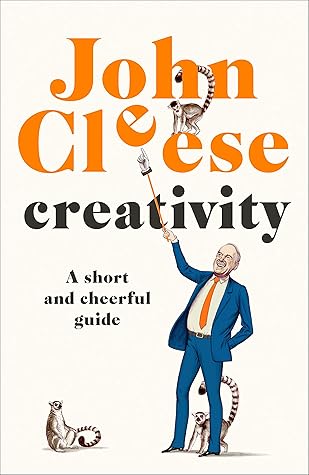More on this book
Community
Kindle Notes & Highlights
by
John Cleese
Read between
September 26 - September 28, 2024
Wherever you can find a way of doing things that is better than what has been done before, you are being creative.
And you can teach creativity. Or perhaps I should say, more accurately, you can teach people how to create circumstances in which they will become creative.
So I began to realise that my unconscious was working on stuff all the time, without my being consciously aware of it.
The top basketball players will shout, “Stop thinking!” to a colleague who is not having a good day, because conscious thought will slow them down.
And the language of the unconscious is not verbal. It’s like the language of dreams. It shows you images, it gives you feelings, it nudges you around without you immediately knowing what it’s getting at.
when we are not sure what needs to be taken into account, or even which questions to pose—or when the issue is too subtle to be captured by the familiar categories of conscious thought—we need recourse to the tortoise mind…This type of intelligence is associated with what we call creativity, or even ‘wisdom.’ ”
The first was that the creative architects knew how to play.
The second was that the creative architects always deferred making decisions for as long as they were allowed.
They are so absorbed in what they are doing that they are not distracted, they’re just…exploring, not knowing where they’re going, and not caring either.
It simply means they are able to tolerate that vague sense of discomfort that we all feel, when some important decision is left open, because they know that an answer will eventually present itself.
Well, it would be foolish, because if you can wait longer, two incredibly important things may happen. You may get new information. You may get new ideas.
But creative people are much better at tolerating the vague sense of worry that we all get when we leave something unresolved.
The greatest killer of creativity is interruption. It pulls your mind away from what you want to be thinking about. Research has shown that, after an interruption, it can take eight minutes for you to return to your previous state of consciousness, and up to twenty minutes to get back into a state of deep focus.
But perhaps the biggest interruption coming from your inside is caused by your worrying about making a mistake. This can paralyse you. “Oh,” you say to yourself, “I mustn’t think that because it might be WRONG.”
Let me reassure you. When you’re being creative there is no such thing as a mistake.
As Einstein once pointed out, if we know what we’re doing when we’re investigating something, then it’s not research!
You create boundaries of space to stop others interrupting you. You shut the door and put up a “DO NOT DISTURB” sign; or you go and hide somewhere people won’t bother you.
You create boundaries of time, by arranging, for a specific period, to preserve your boundaries of space. You might, for example, decide to create a specific play period that starts in a few minutes’ time and finishes, say, ninety minutes later. You treat those ninety minutes with huge respect and don’t allow any interruptions. And, knowing that this chunk of time is sacred, you can then start to play.
Once you start chasing away any distracting thoughts, you’ll discover, just like in meditation, that the longer you sit there, the more your mind slows and calms down and settles.
He once told me that when he was working on a particular scene he’d write down the key idea behind it on a piece of paper, and then stick the note right in front of his nose on the computer. If he realised his mind had wandered too far, he would glance at the note and that would bring him back to what he was trying to achieve.


